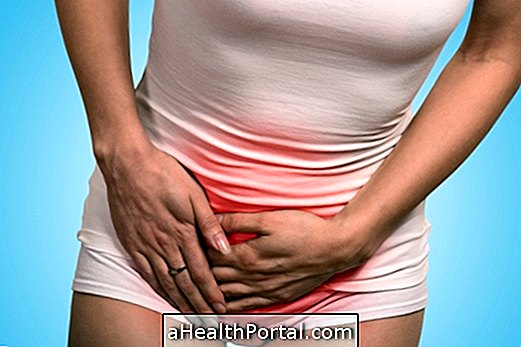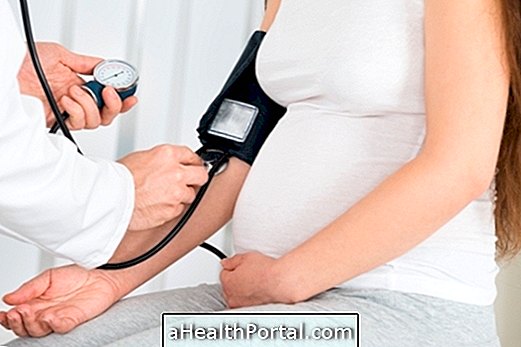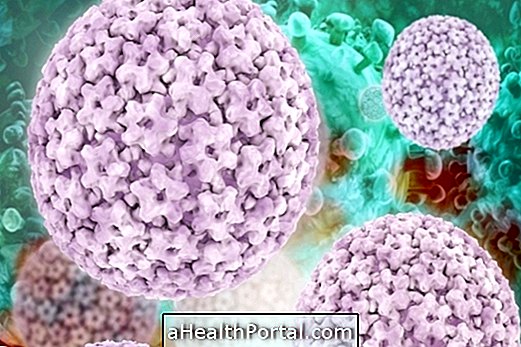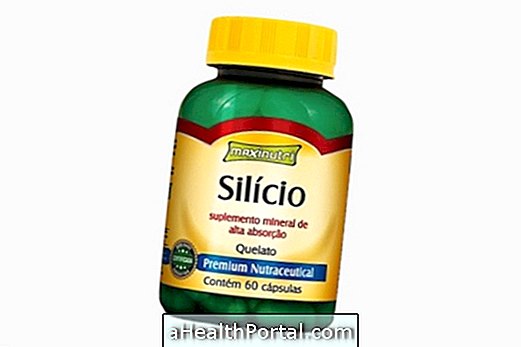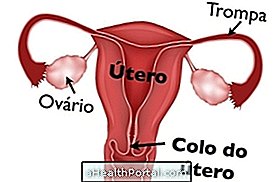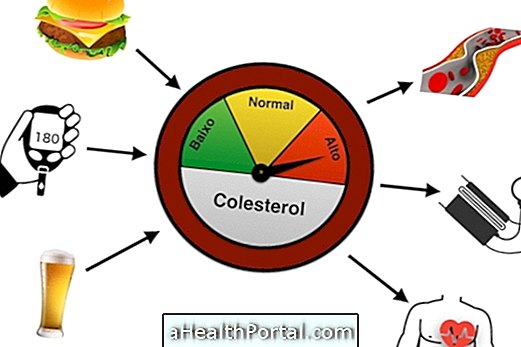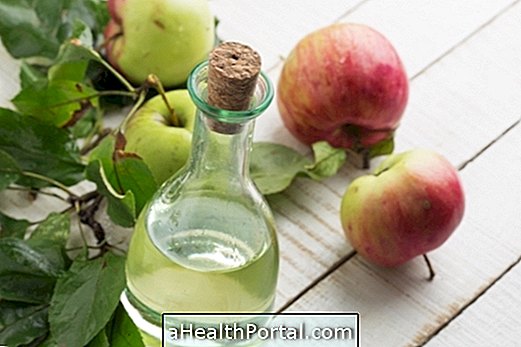Inflammation in the uterus is the irritation of your tissues, caused during infections by microorganisms such as candida, chlamydia or gonorrhea, for example, but also by allergies to products, pH change due to lack or excess hygiene or injuries in the region.
It causes symptoms such as discharge, bleeding out of menstruation, colic type pain and swollen uterus sensation, however, may not show symptoms and so your diagnosis is often not done early, leading to worsening of the disease. Inflammation can occur in both the cervix, located at the bottom of the vagina, and in the inner region, the endometrium, resulting in endometritis, as the images show:
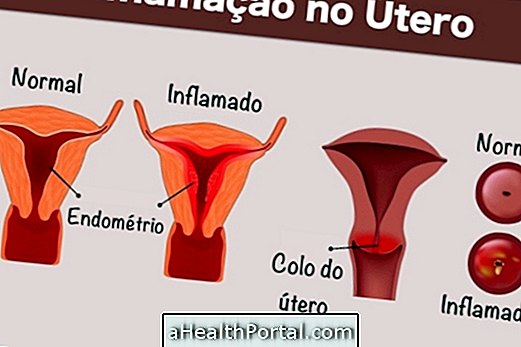
Confirmation of the diagnosis is made by the gynecologist through the pap smear or an examination called colposcopy, where the signs of inflammation are observed and material can be collected for analysis. The treatment is usually done with tablets or ointments, which may be antibiotics or anti-inflammatories, for example.
What are the symptoms
The main symptoms of inflammation in the uterus are:
- Yellowish, brown or gray discharge with bad smell;
- Bleeding during or after intimate contact;
- Bleeding outside the menstrual period;
- Pain when urinating and during intimate contact;
- Pain in the lower part of the belly;
- Feeling of swelling in the lower part of the belly or in the uterus.
However, it is important to remember that these symptoms may also be present in other diseases of the uterus, such as myoma or uterine polyps, for example. See the most common problems that cause these symptoms in: 7 Signs of problems in the uterus.
Also, pain on urination and abdominal pain may also be signs of inflammation in the ovaries, so learn how to spot this problem here.
Causes of inflammation in uterus
Causes of inflammation in the uterus include:
- Presence of sexually transmitted diseases, such as gonorrhea, chlamydia, or HPV;
- Infectious vaginitis, such as candidiasis or bacterial vaginosis, for example;
- Allergy to the material of condoms, diaphragm or chemicals such as spermicides;
- Lack of hygiene in the intimate region or excessive hygiene, especially with the use of showers, as this changes the vaginal pH and favors the growth of microorganisms that cause diseases;
- Labor injury.
It is important to identify the cause of the inflammation of the uterus so that proper treatment is done to avoid recurrence of the problem.

Inflammation in the womb and pregnancy
Inflammation in the uterus makes it difficult for a woman to become pregnant by preventing the embryo from implanting itself in the wall of the uterus and developing. However, when it occurs already during pregnancy, it usually does not interfere with the development of the fetus if treated properly, but when left untreated can lead to complications such as abortion.
How is the treatment done?
The treatment to be performed for inflammation in the uterus depends on the cause of the problem. When the disease is due to the presence of foreign microorganisms, the treatment is done with the ingestion of antibiotic, tablet or ointment, antifungal or antiviral medicines, such as Nystatin, Miconazole, Clindamycin or Metronidazole, for example, which should be used according to the guidance of the gynecologist. In some cases, sexual partners also need to be treated, to ensure that the micro-organisms are eliminated and thereby prevent the inflammation from returning.
In addition, the gynecologist may also indicate cauterization of the cervix to help heal some lesions. However, if the inflammation in the uterus is caused by allergy to materials that come into contact with the woman's internal region, such as the condom and the diaphragm, the use of these products should be discontinued and, if necessary, anti-inflammatory drugs to improve pain and recover the uterus.
If inflammation in the uterus is not treated, it can reach more internal regions, such as the endometrium, fallopian tubes, and ovaries. In such cases, treatment may need to be done at the hospital, with medication given directly into the vein to contain the inflammation more quickly. See how treatment is done when inflammation reaches deeper regions of the uterus: Pelvic inflammatory disease.

Home options
As a way to supplement the treatment of inflammation in the uterus, it is advised to avoid intimate contact, drink about 2 liter of liquids per day, in addition to having a healthy diet, which promotes the healing of inflammation, rich in omega-3, present in salmon and sardines, as well as fruits, vegetables and greens.
Check out also the recipes for home remedy options that can be used at home to complement the treatment.
Can inflammation in the uterus turn cancer?
If the inflammation in the uterus is caused by the HPV virus, and the treatment is not properly shaved, inflammation may become cancer of the cervix. Therefore, whenever there are signs and symptoms that indicate an inflammation, it is important to seek care with a gynecologist to identify the cause and start treatment as soon as possible.
Understand what are the symptoms of cervical cancer, the risks and what to do in case of suspicion.





